Omega is one of my favorite watch manufacturers. Their core collection has consistently appealed to me. Among watch aficionados, Omega is known for being the Masters of Speed, Masters of the Sea, and Masters of…getting railed? Enter the Railmaster. Jokes aside, the Omega Railmaster dates back to the late 1950s, when Omega launched the CK2914. This watch was intended for railway workers and anyone who worked regularly around magnetic fields. This was the Omega’s answer to the Rolex Milgauss, launched around the same time.
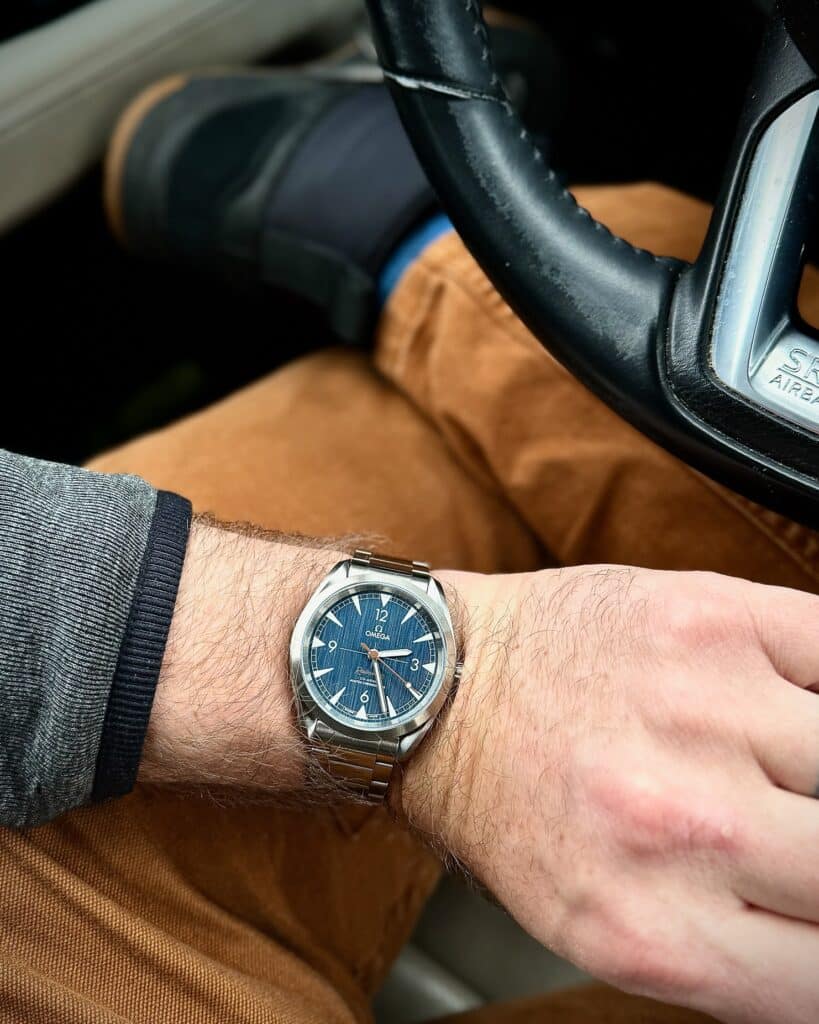
These anti-magnetic watches used a “Faraday cage,” a soft iron cage surrounding the movement that acted as a magnetic shield. The run of the “OG” Railmaster was short-lived. Omega discontinued it six years after its launch. It wasn’t until 2003 that we saw the Master of Rails rear its magnetic-resistant head yet again…The watch was reissued in several sizes, including a laughable 49mm XXL version. These watches maintained their predecessor’s anti-magnetic attributes but only survived until 2012.
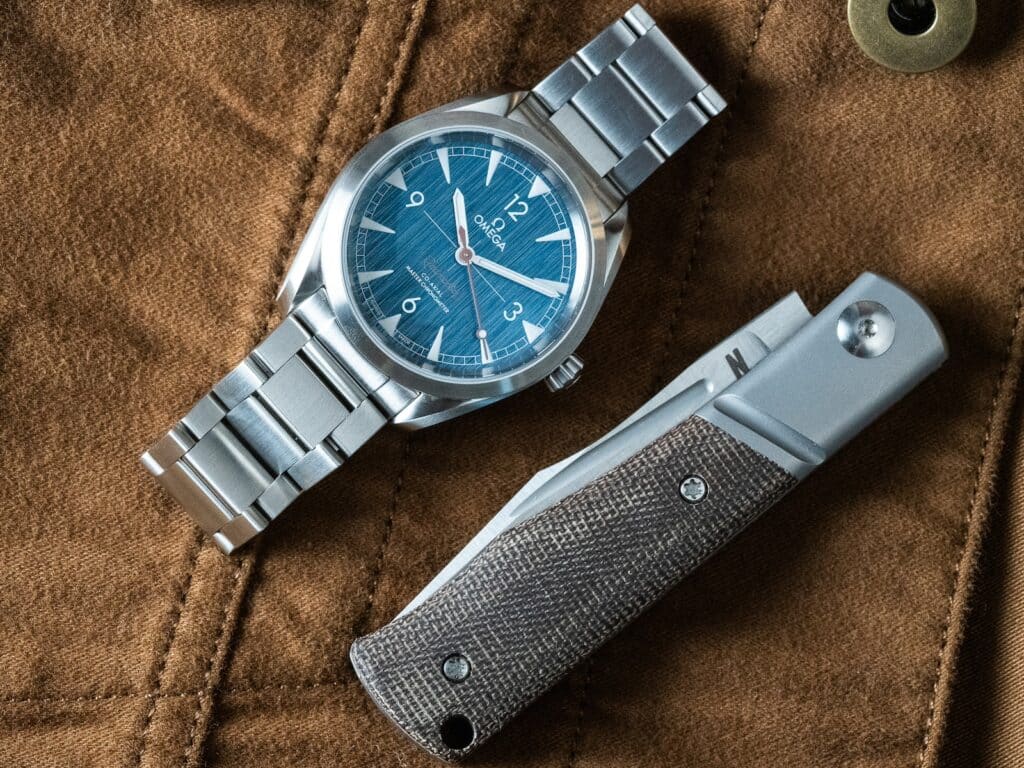
In 2017, Omega released a trilogy of three watches modeled after the original 1957 versions, which were loaded with Master Chronometer/Co-Axial movements. Alongside this very limited (and expensive) release, Omega launched the ::deep breath:: Omega Railmaster Co-Axial Master Chronometer. This is the watch I have here today, and let me tell you… It’s a winner. This particular Railmaster is the 220.10.40.20.03.001 (for real Omega?) Or the “Denim Dialed” version.
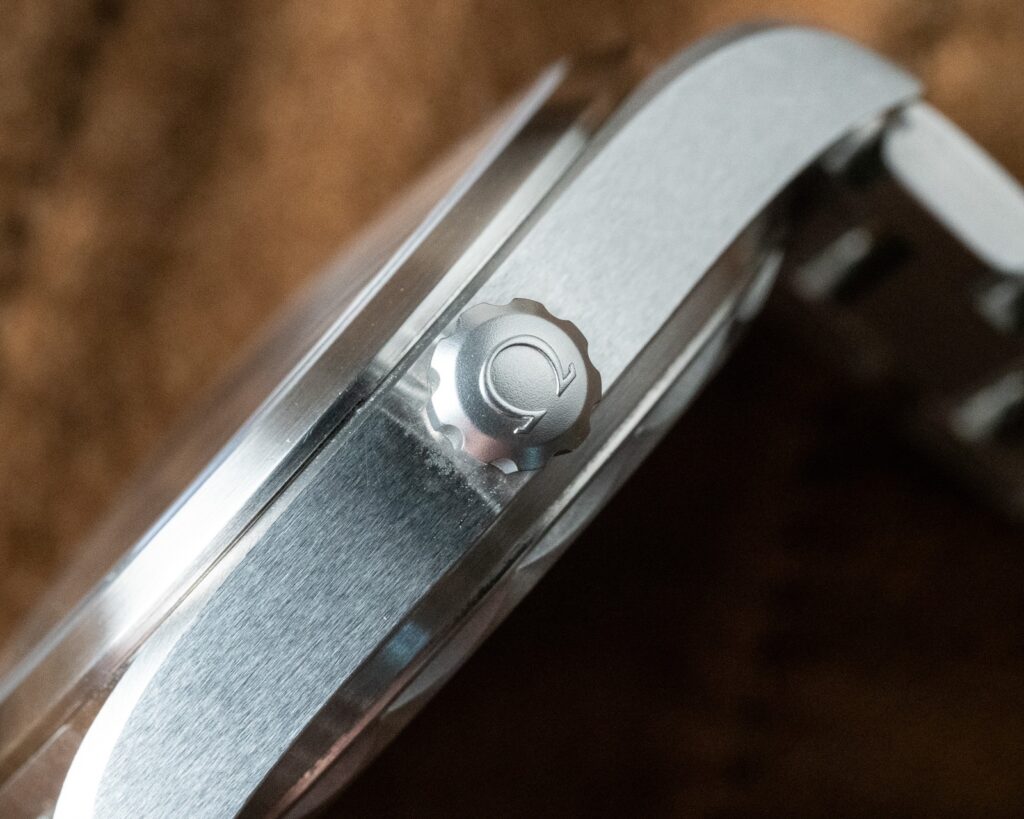
Easy-wearing case with great proportions
I’ve owned the Railmaster for about three months, and I think the case is one of the most comfortable I’ve worn in a long time. It’s like Omega hit the golden ratio between the different dimensions of the case. It’s 40mm wide, 46.5m lug to lug, and a svelte 12.5mm thick. This is a Goldilocks watch for me. It’s not too big, not too small, nor is it too thick. It’s just right on my 7-inch wrist. The whole case has this very utilitarian brushing across all the surfaces. This could look pretty blah on a simpler watch, but when applied to Omega’s twisted lug case, there are still enough surfaces to give the watch some nice “dazzle” in the light.
Flipping the watch over, you see the traditional Omega Hippocampus and something very interesting… On the crown side of the case back, you see “NIAD Lock.” This is an interesting change from a traditional screw-down case back, and it is similar to a “bayonet” mounting system, as you’d see on a camera lens. This is a system that Omega is slowly rolling out to other models in their catalog; you can see it on some ceramic Seamasters. The added benefit of this case back is that it allows Omega to “index” the engravings to always be “up” relative to the rest of the case. That gives you a straight-looking Hippocampus and writing. Lastly, the crown. Omega opted for a ~5.7mm screw-down crown to maintain the Railmaster’s 150m of water resistance. The shape of the crown tapers in and gets narrower towards the case. I like this aesthetic; it also makes the crown easier to grip.
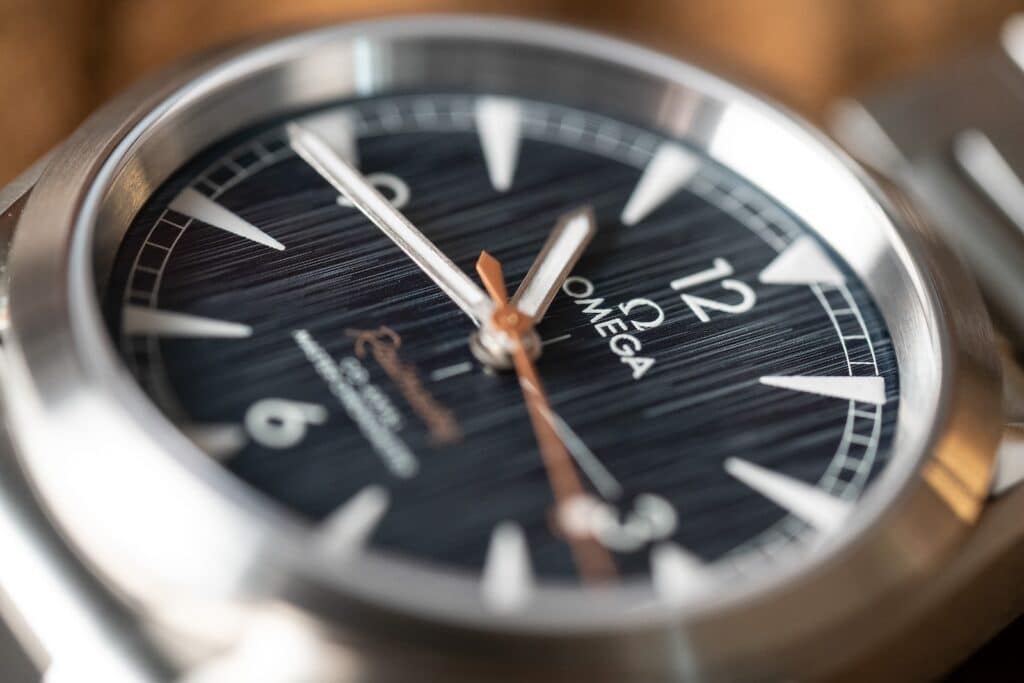
Vertically-brushed “denim” dial
I think it’s safe to say that the most noticeable feature of this generation of Railmaster is the dial. This Railmaster is available in three dial colors: black, light grey, and blue (often called denim). The dials themselves have a vertical brushed texture. Now, this sounds simple, but it creates tremendous depth and detail that will be unique to each dial. Describing how these dials play with the light as you move your wrist is difficult. The blue takes on a real pearlescent quality, moving between several shades of blue depending on how you hold your wrist. There are also hints of bronze and grey that show up between the vertical brush makes. It’s difficult to convey in words, but the watch is a real stunner on the wrist.
Moving beyond the dial itself, there are some other exciting things to point out about the Railmaster, most notably the contrasting hands. The seconds hand and the “Railmaster” script on the dial are rendered in a nice bronze color, contrasting with the exclusively silver and white elements that Omega used. It reminds me a bit of the LE Prospex models that Seiko did with a gold seconds hand. I love this personally. It gives the dial a pop of color that stands out very well.
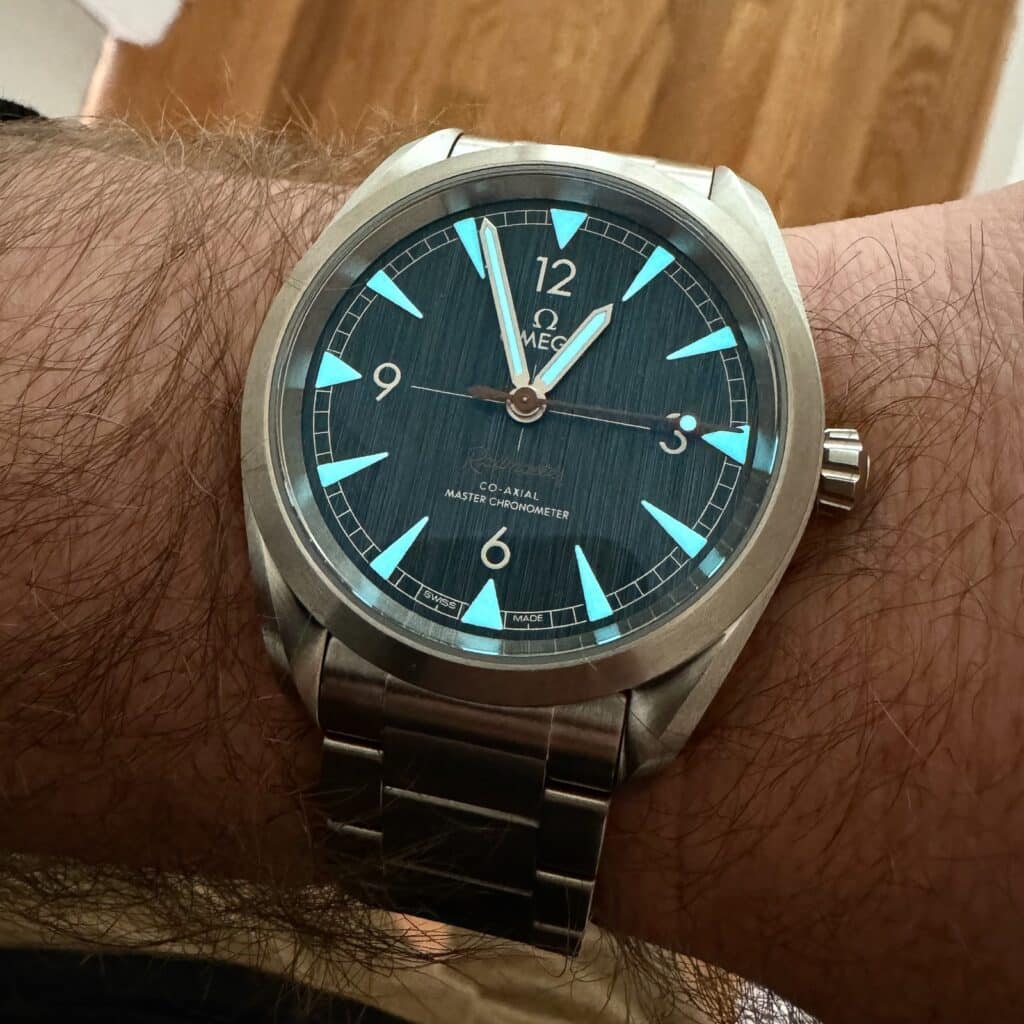
Lastly, the lume. The indices are made of a pure white Super-LumiNova that glows blue at night. It’s not the most powerful lume I’ve ever seen, but it does the job. It’s worth pointing out that the lume itself is not painted on the dial but rather filled into the recesses where the indices are. This is similar to how Panerai does their “sausage” dials. I think the flat dial without any applications of any sort lends itself to the utilitarian nature of the Railmaster, all while maintaining the refinement you’d expect from Omega due to the brushing.
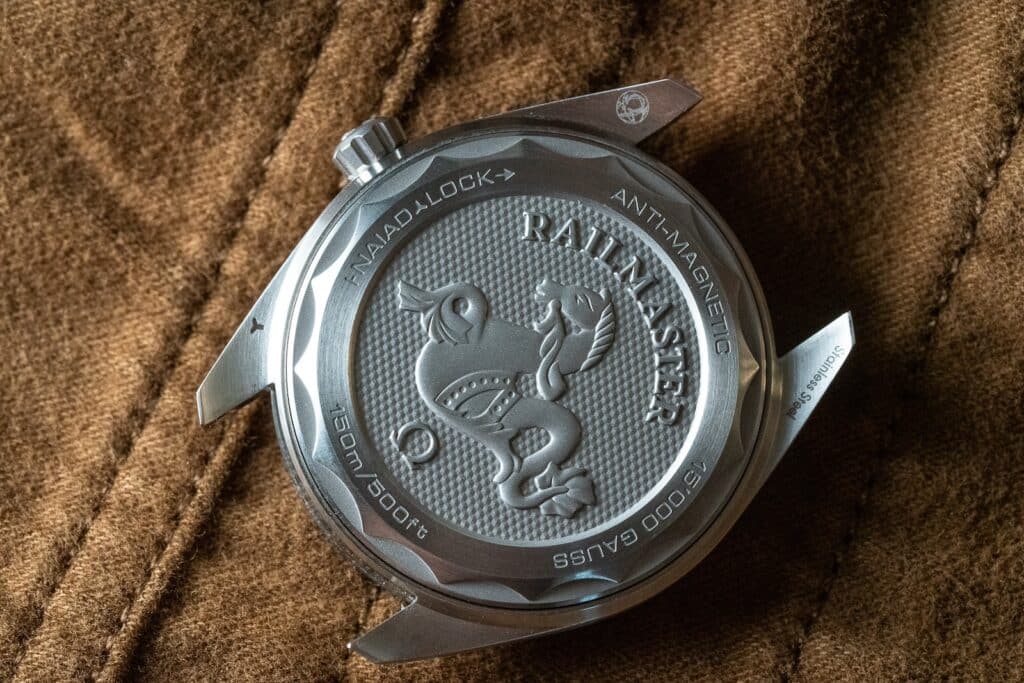
Accurate METAS-certified movement
The Railmaster is powered by the Omega 8806 time-only Master Chronometer Co-Axial movement. This is a 25,200bph, 35-jewel movement that was an early introduction to Omega’s METAS certifying their movements. The Railmaster also serves as a great intro point into Master Co-Axial/Chronometer watches.
My experience with this movement so far has been, frankly, incredible. I store my watches in a Holme and Hadfield watch box overnight, which holds the watches with the crown side up. In this orientation overnight I observe roughly a 1s gain per day. To me, this is the perfect scenario. You get a watch with a movement in it that’s lauded for its accuracy, and it turns out to be indeed accurate AF. If you’ve been around watches long enough, you’ll likely be disappointed by an “accurate watch’s” performance sometimes. So this is refreshing.
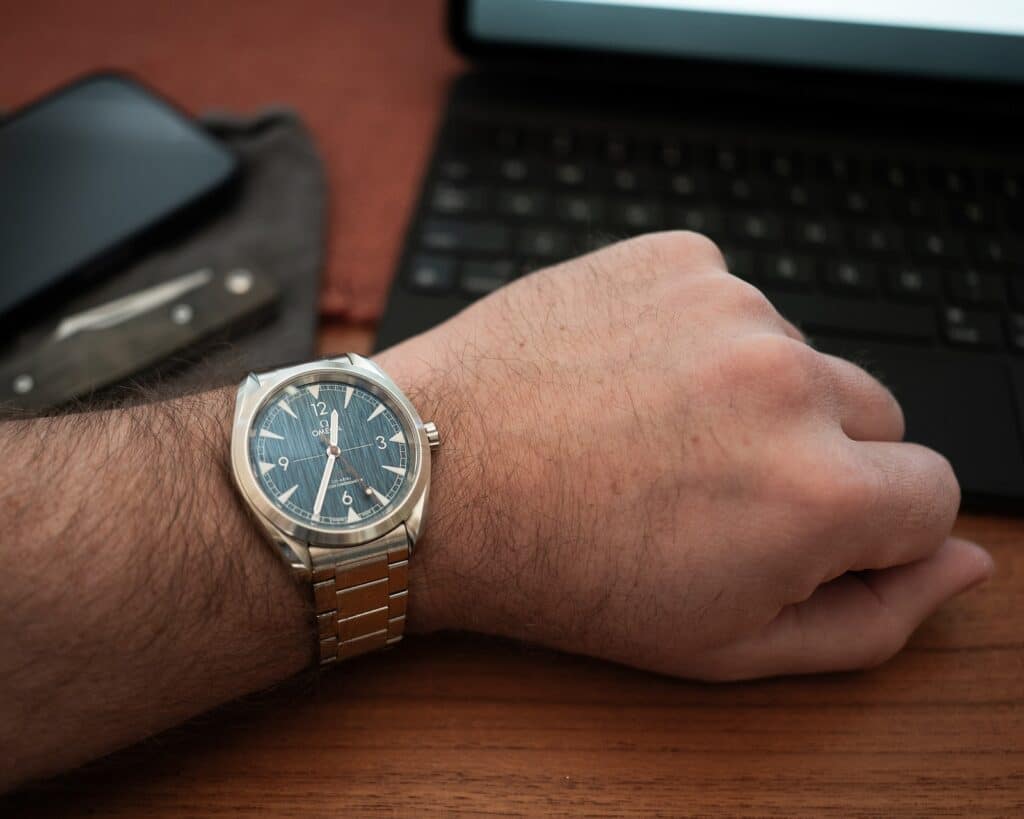
One last thing I want to touch on here is that the Railmaster is time only. I have always been an “I want my watch to do the most things possible” apologist. I think this watch has cured me of that, however. It’s so nice to be able to just set the time and roll, no need to check the AM/PM cycle, spin through the date, and make sure the day is correct. It’s just time and go. It’s simple and elegant, and I guess I am a changed man.
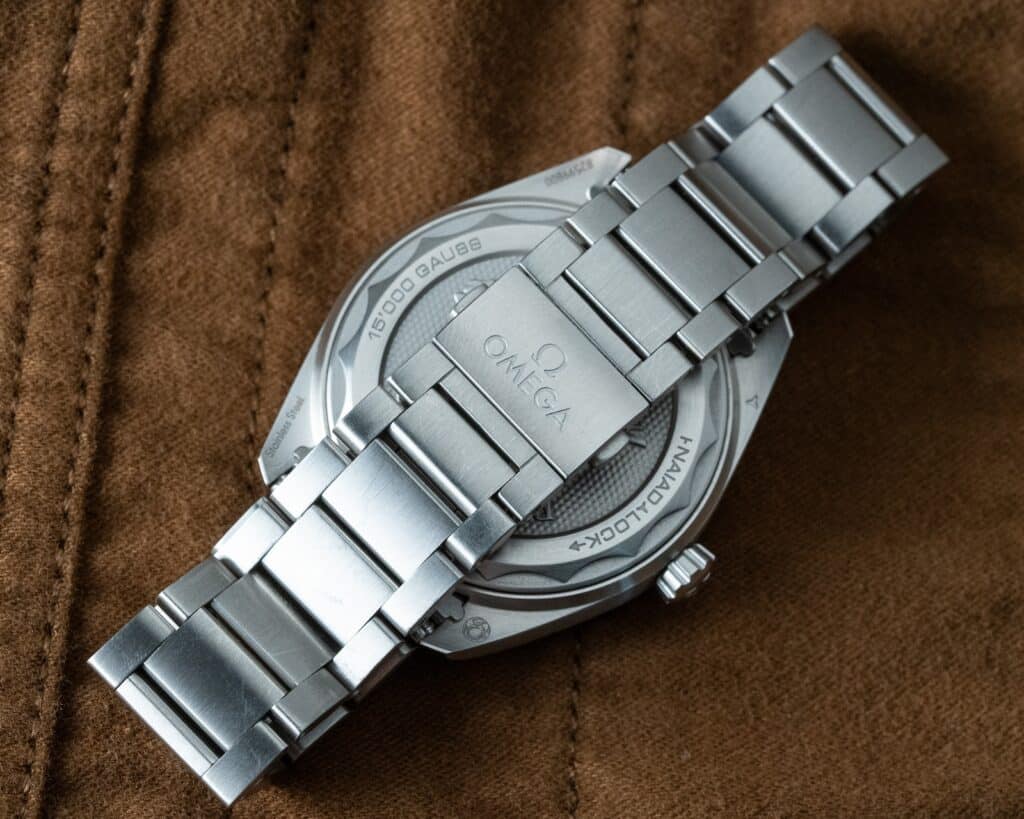
Strap & bracelet options
Omega offers the Railmaster on a steel bracelet like I have, a fabric strap, or, lastly, a few NATO strap options. I will always advocate for getting the steel bracelet when you can; in this case, it’s worth it. The Railmaster bracelet is a three-link style bracelet with an entirely brushed finish. The clasp is a butterfly style with no micro-adjustments. The links are held together by a small rod with an even smaller cap screw on both sides of the link.
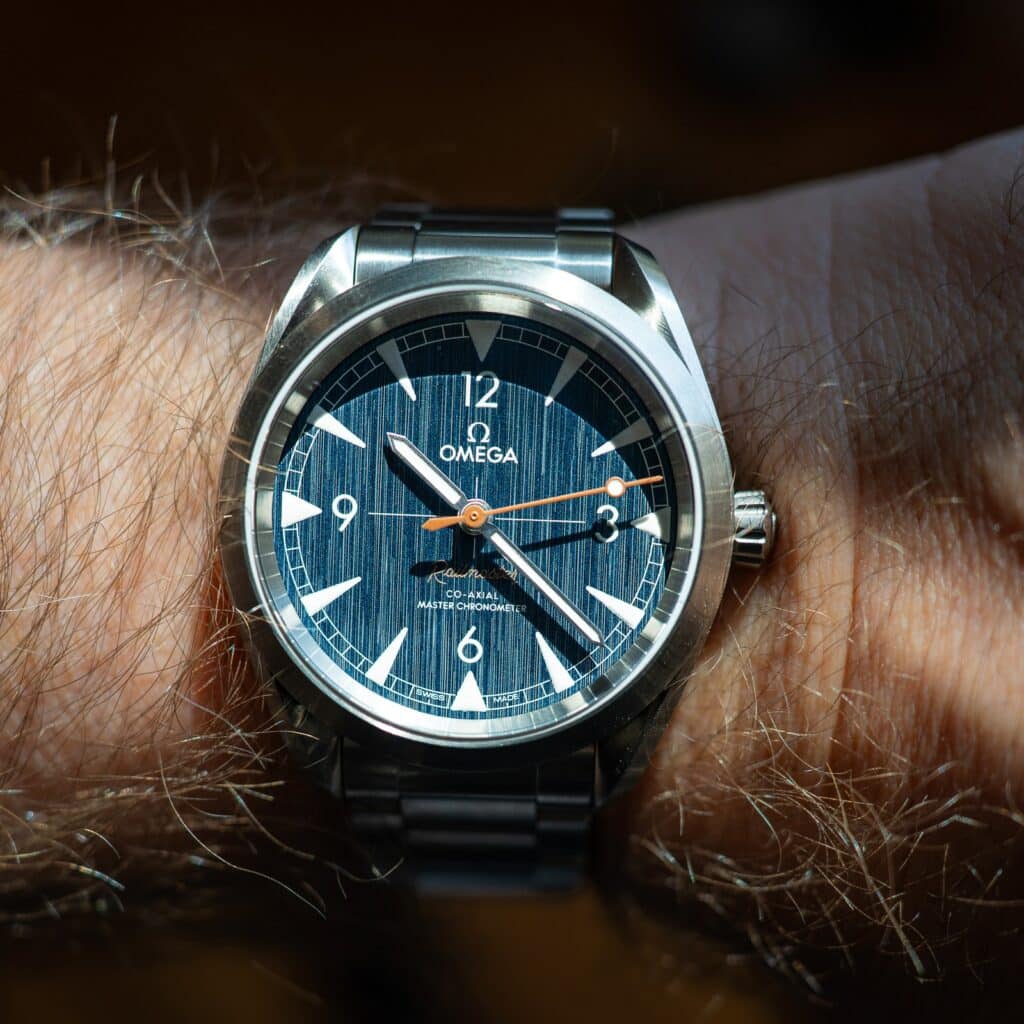
The group-think out there will largely say that the lack of micro adjustments and the butterfly clasp are negatives, which I can understand. But it is incredibly comfortable if you can get a good fit on the Railmaster bracelet with the full and half links. I love the brushed finish as well; it’s a bit matte as well, which helps to hide any wear at all. For me, with a single half link in, I’ve found a comfy place where I can wear the watch with pretty much anything. The butterfly clasp is a nicely machined example, in my opinion. Both sides close with a confidence-inspiring click, and it’s easy to pop it back open when you’re ready to remove it.
All that being said, I think the Railmaster has equal potential to be a strap monster. I suspect it will wear a NATO, fabric, or leather strap extremely well, and Omega, in their infinite wisdom, gave this watch 20mm lugs. So anything will fit on it. If I could change one detail, it would be the switch from the rod with cap screws to a single screw holding the links together. In my experience, it’s much easier to size.
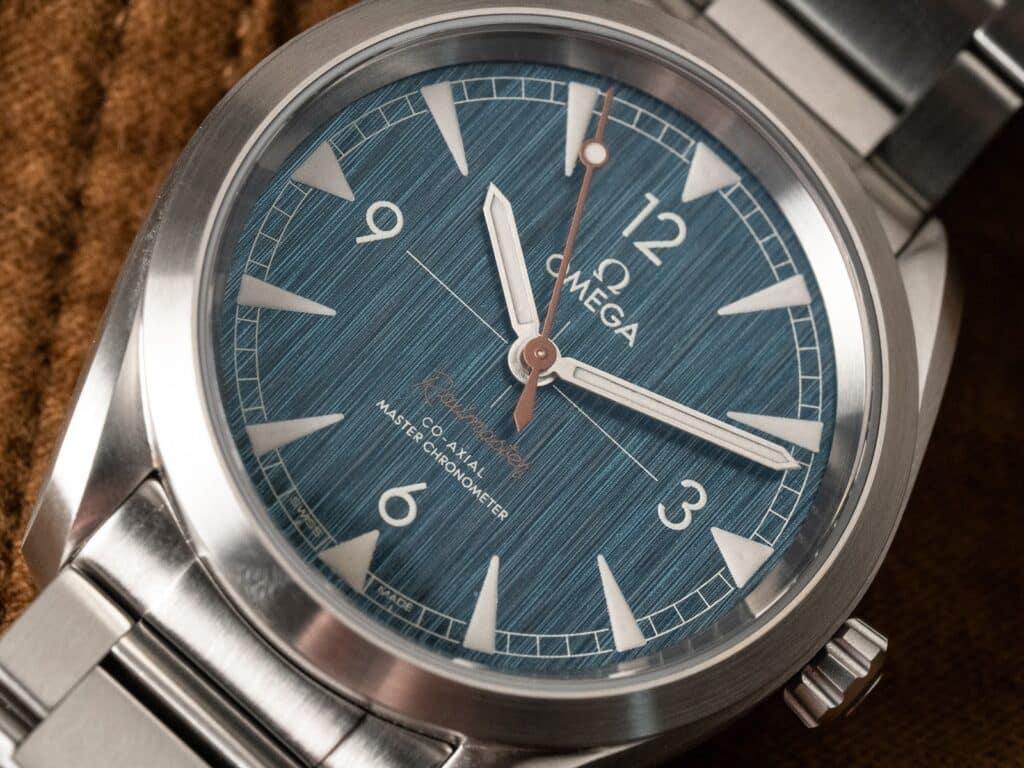
Final thoughts
I guess the most straightforward way I can wrap this review up is to explain my tendencies as a watch enthusiast. I am a serial watch flipper. I buy a watch and wear it for 30-90 days, and then the teensy cries of the money trapped inside that watch start to haunt my dreams. Before I know it, the watch is listed on Reddit, and I’ve got something else new incoming. I’ve started down that path with the Railmaster several times, but I keep making one critical error…I put the watch on and wear it for a day or so. This version of the Railmaster is just so good. It’s incredibly comfortable on the wrist. The watch looks good and retains that “feeling” of luxury while standing firmly in the tool watch circle.
What about competitive options? There will be a little variation here if we’re talking MSRP vs Grey/Secondary Market value — but let’s just paint with broad strokes here. The first and most obvious alternative to me would be an IWC Mark series. Sure, we’re switching a “field watch-y” design for a “pilot watch-y” design, but you’ll retain your simple dial, numerals, high-end Swiss manufacture, and overall vibe, in my opinion.
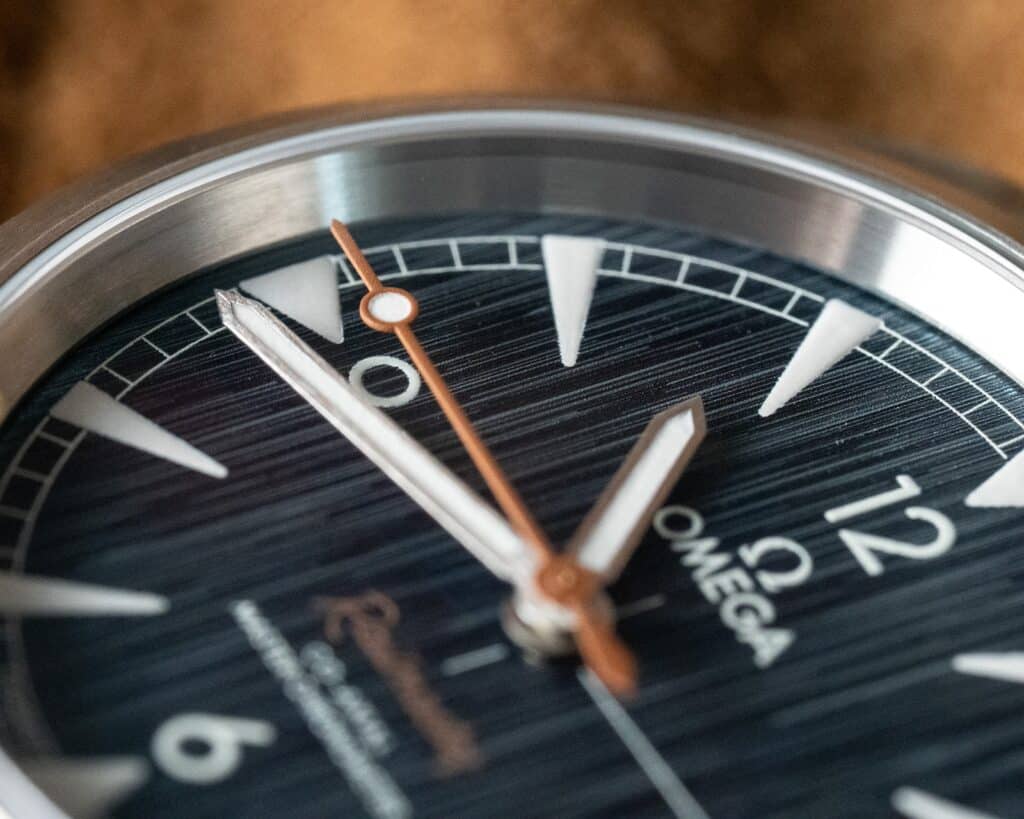
Next, I might suggest looking at Omega’s own Aqua Terra. Similar size, you’d gain a date in most cases, and you’d still be using a Master CoAxial movement. The newer Aqua Terras are nice, in my opinion, especially the versions with vertical striping on the dial (as opposed to horizontal). Again you’re moving from a field watch to a dressy-divery type watch. But there are enough similarities here to allow the comparison.
You could also try a Tudor Black Bay. I would point out the Black Bay 58 (which will feel more like a diver) or the Black Bay 41 with the smooth steel bezel. The latter of which might be the most direct comparison to the Railmaster. But in both watches, you’ll get a COSC-certified, in-house modern movement and a well-executed steel bracelet. I just find the Railmaster’s dial more interesting personally. Lastly, if you want to stay in the tool watch family but maybe less “refined” I think you could take a look at the Vertex M100A. MSRP on these is a bit lower than the Railmaster, but on the secondary, they’re closer (kinda).
I am actively avoiding comparisons to the Rolex Explorer I. These watches are probably the best direct comparison in terms of aesthetic and “aura” but there is too much of a delta in price both new and secondary for me to offer it as a real suggestion. Ultimately, the Railmaster is a great way to experience a modern Omega, with the METAS movement in an affordable package. It’s also versatile enough to be worn for pretty much anything. I may even go so far as to say that I think the 2017 version of the Railmaster might be the best bang-for-buck Omega that a collector could buy right now.

Aaron is a Nashville based watch collector and road bike rider. In addition to TBWS, his articles can been seen on ABlogtoWatch and Bladereviews.com. Aaron’s interests primarily focus on tool watches — specifically in the dive, pilot, or field watch arenas. When not over enthusiastically asking someone about the watch they’re wearing, Aaron can be found traveling, cycling, trying new restaurants with his partner Carissa, or petting any and all dogs within his sightline.
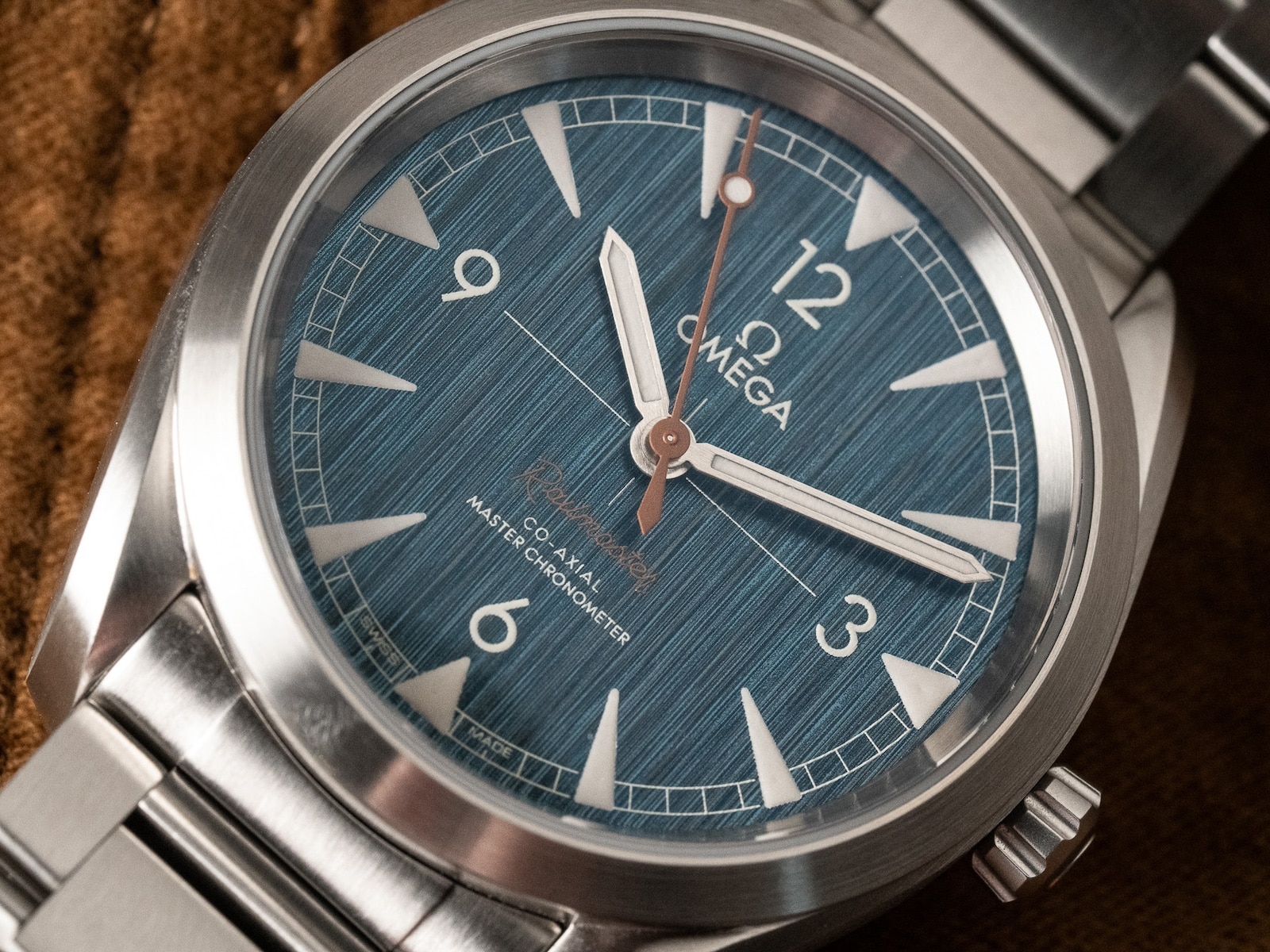
Loved this watch, alas I could never get a good fit and was a bit too heavy for my skinny wrist. Swapped it for the much lighter Seamaster 2231.80. But this watch is probably the best deal out there in the luxury watch world. Well written review accompanied by superb photos that really capture how that dial can change in all types of light.
I own the same Omega Railmaster given as a gift.
I am surprised to see that our runs faster than my Grand Seiko. It’s faster by 10 sec per day.
The steel strap is nice but the edges are sharp. It also catches the hair on my risk.